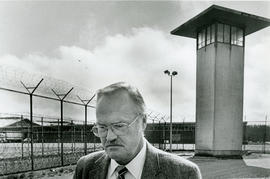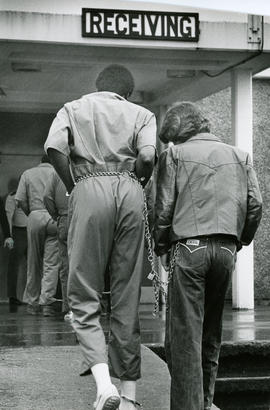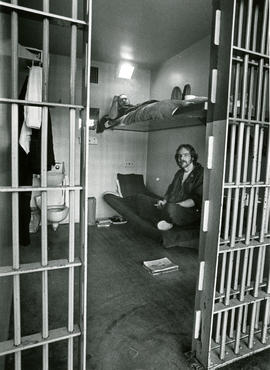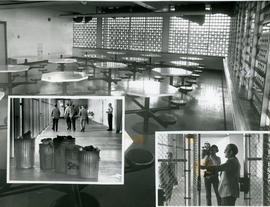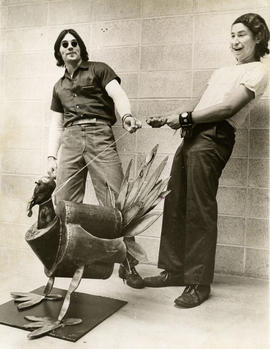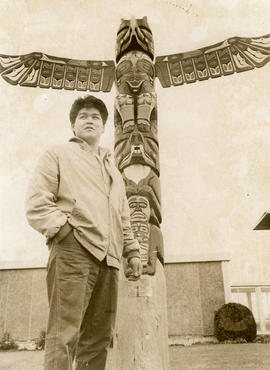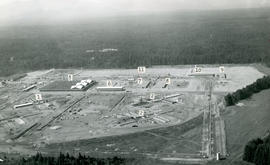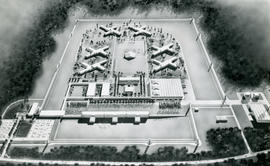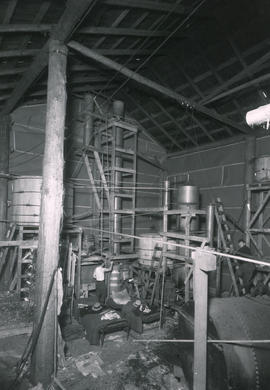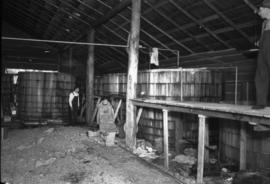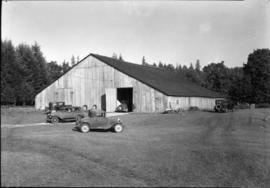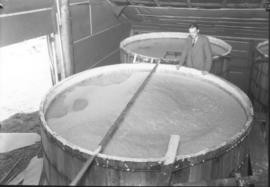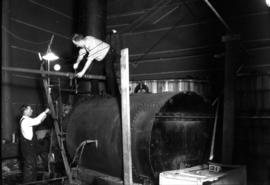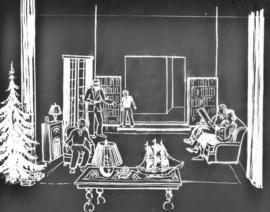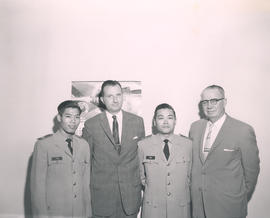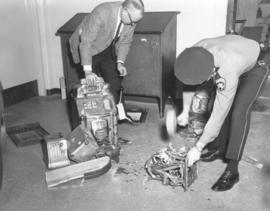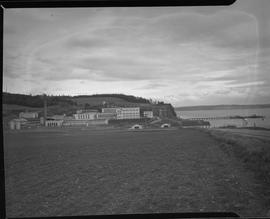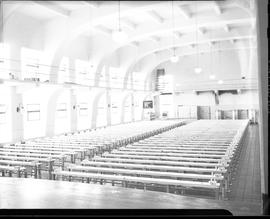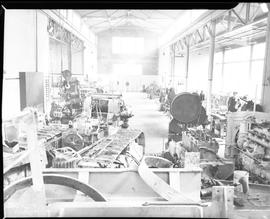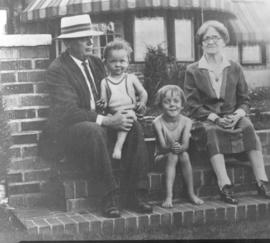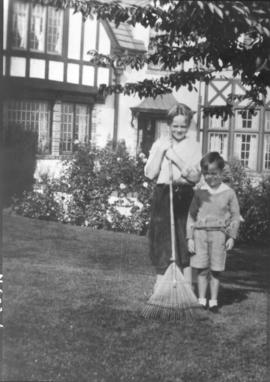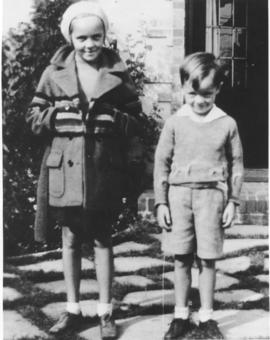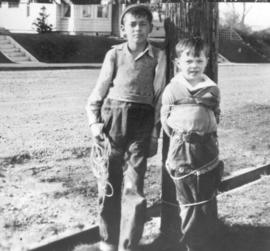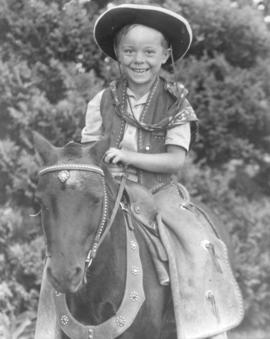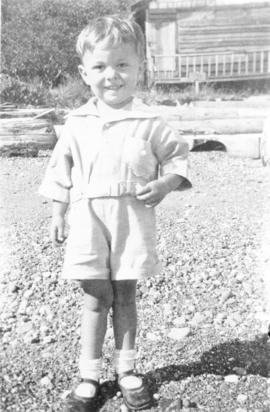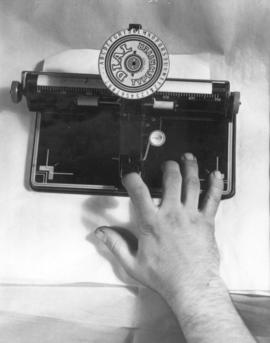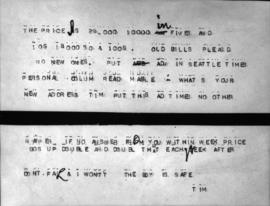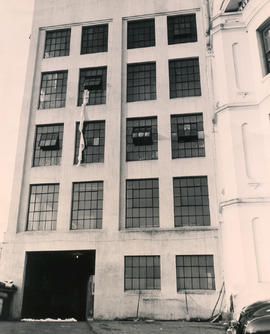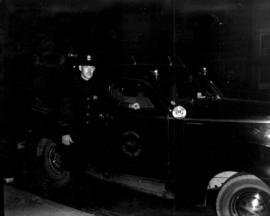Copy photograph of Charles Mattson, on pony, wearing hat, scarf, leather vest and chaps. At the age of ten, Charles Mattson was kidnapped at gunpoint from his parents' home at 4605 No. Verde. Copies were made of several older photographs of the boy, such as this one, as newspapers fought to fill their front pages with the story. No fewer than 12 high profile kidnappings had occurred since 1934 and the famous kidnapping and murder of the Lindbergh baby. Charles' parents, Dr. and Mrs. William W. Mattson, were an unusual target; they were only modestly well-to-do and not widely known. In fact, Dr. Mattson had lost much of his savings in the Depression and his $50,000 home was heavily mortgaged. The boy's battered body was found in the woods in Snohomish County, near Everett, on January 10, 1937. His death brought the largest manhunt in Pacific Northwest history, involving federal FBI men, state, county and city law officers. After a few weeks, despite questioning a large number of suspects, all leads failed. The story slipped from the front page January 26, 1937 and the murder remains unsolved. (T. Times 12/28/1936- 1/25/1937, pg. 1; photograph used T. Times 1/29/1937, pg. 1) (filed with Argentum)
Kidnappings--Tacoma--1930-1940; Mattson, Charles;
